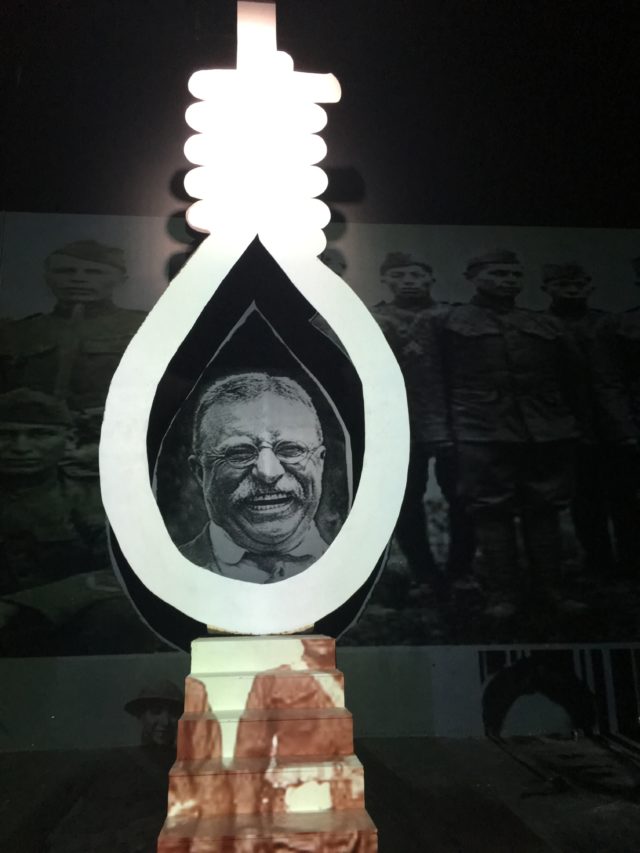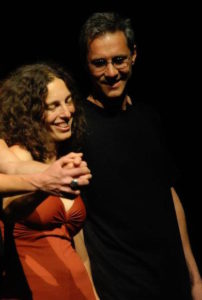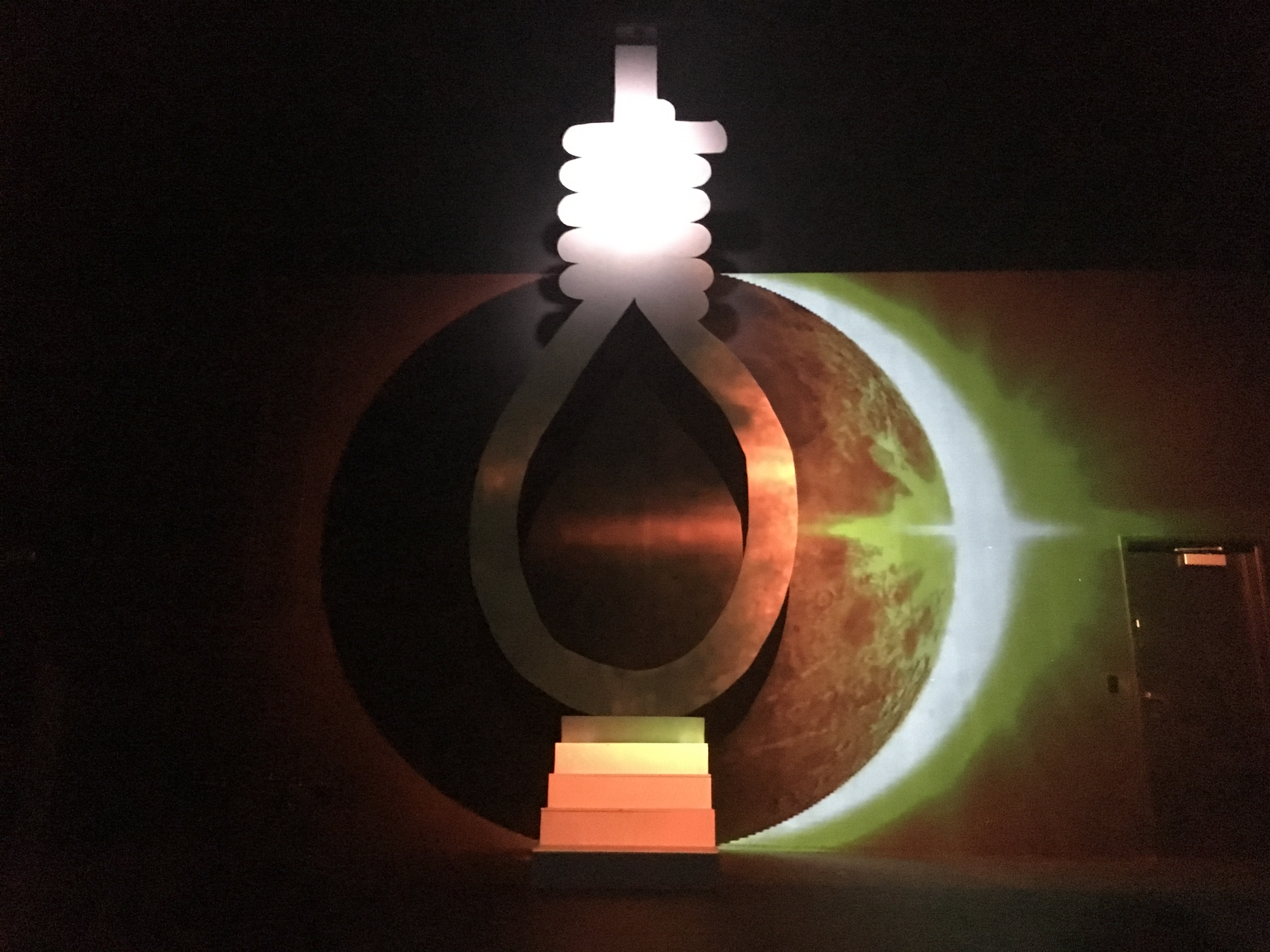
I love America more than any other country in this world, and, exactly for this reason, I insist on the right to criticize her perpetually. — James Baldwin
Over the weekend of Aug. 12, the largest display of white supremacy in the U.S. in decades took place in Charlottesville, Virginia. The “Unite the Right” movement gathered hundreds of men, and some women, many carrying torches, some donning Ku Klux Klan insignia, some waving Nazi flags. The movement was met by counter-protesters and soon skirmishes and brawls broke out between the two groups. The rally ended with one dead and dozens more injured.
As performance artist and artistic director of Motus Theater Kirsten Wilson read about the events in Charlottesville and watched YouTube videos of prominent white supremacists speaking, she began to hear rhetoric all too familiar.
“We were attacked by the most vicious people. The animalistic snares and snarls on their faces. … This is the behavior of an animal, of a savage,” Mike Enoch told a crowd before inviting infamous Klansman David Duke to speak in one of the videos.
For Wilson, this line is nothing new. It’s a racial script straight out of the past and also the topic of Motus Theater’s new production, It’s Only a Paper Moon Hanging Over Immigration History.
“It’s about the assignments,” Wilson says. “Racial scripting was a way to justify dehumanizing [people], the stealing of people’s lands and the exploitation of their labor.”
Since its inception, Motus Theater has garnered a reputation for telling the stories of the marginalized and facilitating dialogue about society’s most pressing issues. But the goal of Motus has also been about “helping people understand the marginalized history that we have edited out so we can think more clearly about the present,” Wilson says.

She started working on the new piece a few years ago, slowly and meticulously researching American history through the experiences of immigrants themselves. Wilson read account after account of new immigrants wrestling with the racially divided society that was and is America, and distinguishing themselves from other marginalized groups by taking on the racism of the time.
“And that’s what became so painful. The process[es] of Americanizing and participating in racial violence were so woven together,” she says. “For most of American history, becoming American also required assimilating into whiteness, especially being recognized as American.”
Whether it was the Irish, the Italians or the Jews, different groups came into the country, particularly after the Civil War, and sought their own identity by separating themselves from the black American experience, she continues.
“Immigrants were coming into such a highly racialized, segregated world and their survival was dependent on distancing themselves from the border of African American or blackness. Because if they were determined to be too black then they were exploitable.”
In looking at the nation’s history in this way, Wilson found it impossible to separate the promise of the American dream from the reality of racial violence that for many became the American nightmare.
It’s Only a Paper Moon is a piece of performance and installation art more than it is theater.

“It’s monologues juxtaposed with images and icons, and how these interact with each other,” Wilson says. “I’m manifesting the absurdity of this history and turning up the volume on it.”
Accompanied by jazz violinist Anthony Salvo, the first act explores the racial scripts of America’s early history, and the roles people were assigned “as in black, white and savage,” Wilson says. The second act explores how other groups of people “negotiated into this highly racialized history.”
Wilson will be joined on stage by improv performer Jim Walker, and the two move through the material as different characters and historical figures, as well as director and actor wrestling over the scripts they’ve been tasked with bringing to life.
Throughout the show, a white noose hangs center stage, creating a visual image of how racial violence threatens the very survival of what America claims to be. Historic images are projected outside the noose, “outside the border of whiteness,” as Wilson says, while other images will appear inside the noose, representing “what we allow inside of the American dream.” And the noose itself becomes a third field of projection, evoking the nation’s complicated history and the internal borders it has created.
Several times throughout the performance, a large projection of an eclipse, the moon slowly moving across the sun, will leave the audience in complete darkness, demanding deep reflection about what they have just seen.
“What I’m hoping in that moment of the eclipse is for people to sit there in the dark and not just feel despair — it’s tragic how this played out in history — but [it’s] a reminder that there are other ways of doing it,” Wilson says. “That we can make other choices and take other actions.”

Although the material is weighty, even burdened, with the injustices of history, Wilson also infuses the performance with levity. “Levity in the sense of making light of insanity,” she says. “We’re trying to make light of these racial scripts because they are absurd … but these are deadly scripts.”
For now, It’s Only a Paper Moon will be presented as a work-in-progress, soliciting audience feedback, as Wilson herself wrestles through the material she’s presenting. It’s also the first installment in the Motus series Let’s All Be Americans Now, an ongoing project made up of several yet to be completed parts.
Although Wilson is still uncertain exactly how it will all unfold, she’s committed to the exploration of how racial injustice and violence has shaped the immigrant story of America up to the present day. In the future, she will be touching more on the experience of the Latino immigrant in America. “Ultimately we need to look at how this racial script has dramatically affected our southern border and this idea of America for Americans,” Wilson says.
But this first production challenges the audience to see history in a new light, not only the way it’s been framed in the past. By exposing these scripts, It’s Only a Paper Moon contextualizes the events of Charlottesville in the broader scope of history. Wilson hopes people will rethink the parts in which they’ve been cast and the roles they play in maintaining the system of racial violence in America.
“These scripts are what helped that young man drive into a crowd of people,” she says. “I think we need to know them and get more familiar with them, so that we can be more careful with them.”
On the ill: It’s Only A Paper Moon Hanging Over Immigration History. The Dairy Arts Center, 2590 Walnut St., Boulder. August 17-20 and 24-27.














